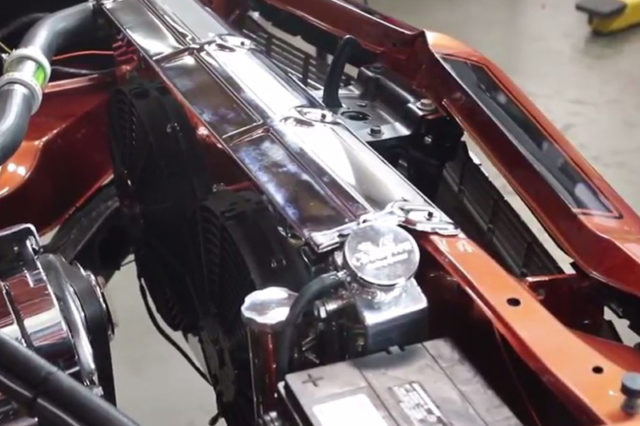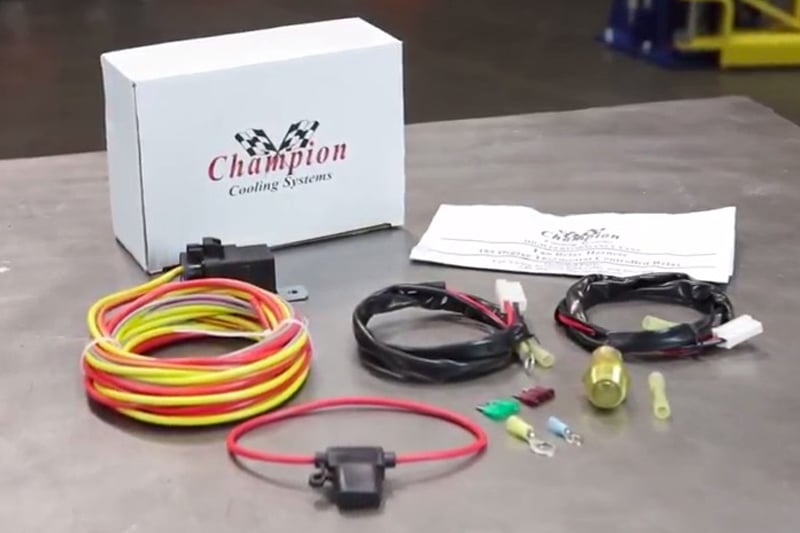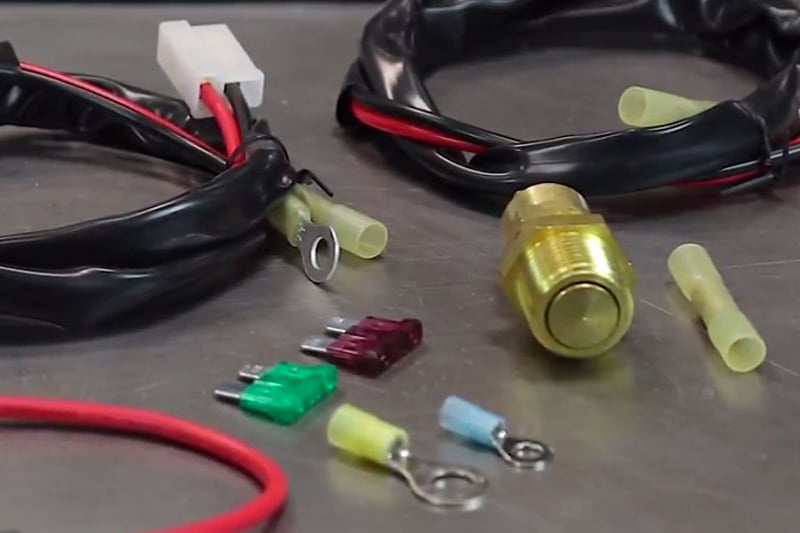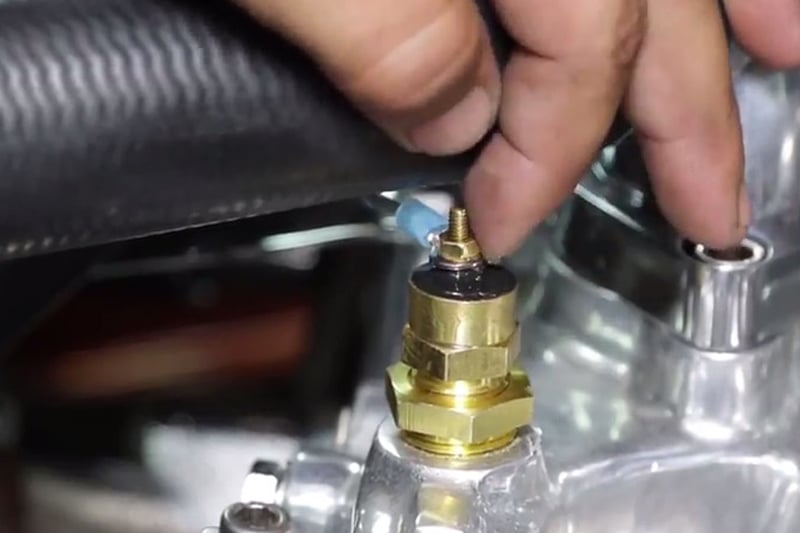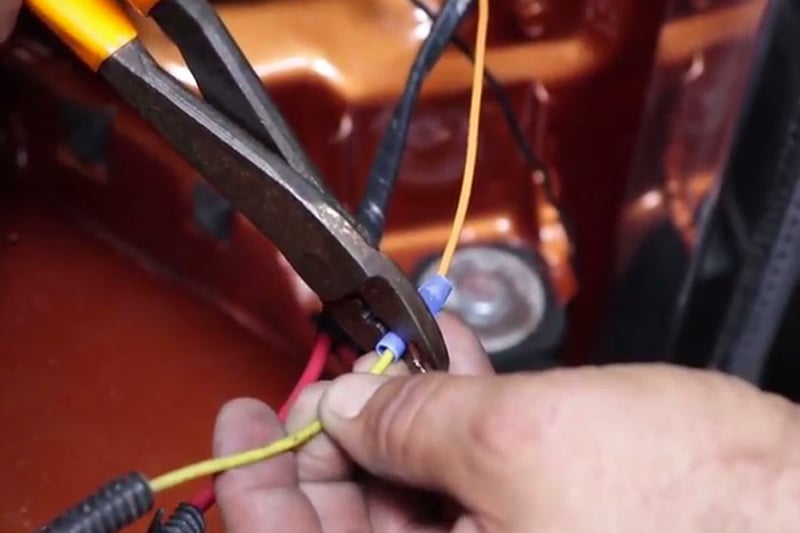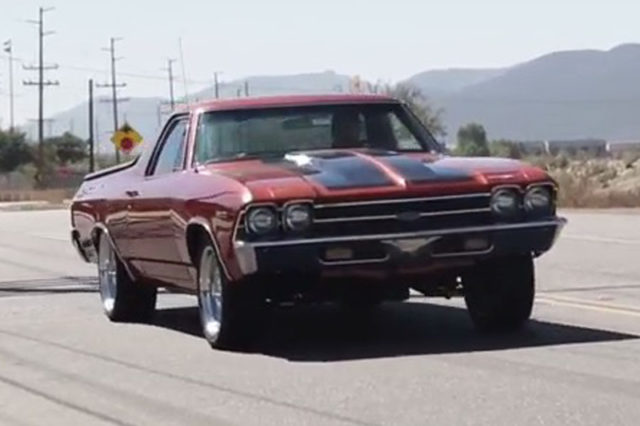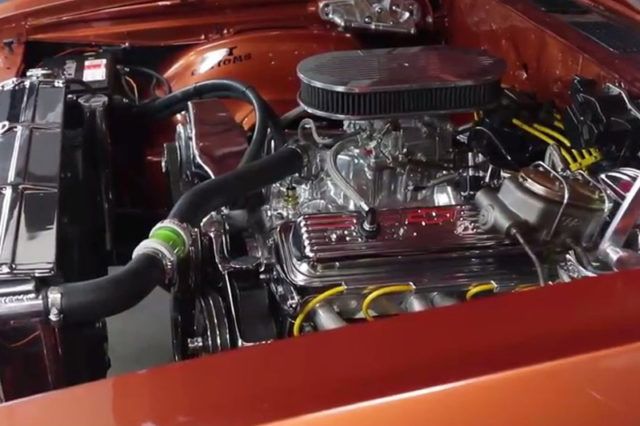 [1]In many classic musclecars, the mechanical radiator fan that came with the car was known to pull plenty of air through at higher rpms, but at idle the fan didn’t work very hard, and that’s when temperatures started to rise – especially sitting at a light in the dead of summer.
[1]In many classic musclecars, the mechanical radiator fan that came with the car was known to pull plenty of air through at higher rpms, but at idle the fan didn’t work very hard, and that’s when temperatures started to rise – especially sitting at a light in the dead of summer.
Those fans might be fine for a bone-stock small-block putting out a little over 160 horsepower, but for today’s modern swaps and high-horsepower builds those mechanical fans aren’t the best solution. More horsepower means more heat, and adding a Champion Cooling [2] aluminum radiator could be the first step to curing those cooling woes.
A second step is to add electric cooling fans to help draw more air through your radiator at idle, such as when sitting at those stop lights in the summertime. Electric cooling fans have a distinct advantage over mechanical fans in that they operate completely independently of engine speed.
This means that you can not only pull more air through the radiator at an idle, but because electric fans are designed to be switched on and off at certain temperatures it means your engine temperatures will be more consistent.
Many of us remember sitting at a light, begging for green as we watch the temperature rise. A switch under the dash isn’t always a failsafe method; forget to flip the switch one time and you’ve potentially done some damage by overheating.
These heat cycles are not good for your engine, and the key to consistency is to add a relay to your cooling fan, particularly one that is activated by a thermal switch. Champion Cooling offers a relay kit that simply wires into your electric fan harness and is activated by the ignition.
A separate temperature sending (thermal) switch will activate the relay at 185 degrees so that the cooling fans can get to work keeping the temperature down. Once the temperature drops, the thermal switch deactivates, switching the fan off until it’s needed again.
Another problem with the switch-under-the-dash method is that when it’s kept on it could actually hinder air flow through that radiator at freeway speeds. Once the temperature is below 180 degrees, the force of the air through the radiator at 60+ mph is typically enough to keep the temperature down. Should it rise again, the relay is activated and the fans come back on.
Champion Cooling has plenty of helpful DIY videos on its YouTube channel [9], and you can visit the Champion website [2] for more information about the various radiators and cooling accessories to help keep your temperatures down and the spirits up.
